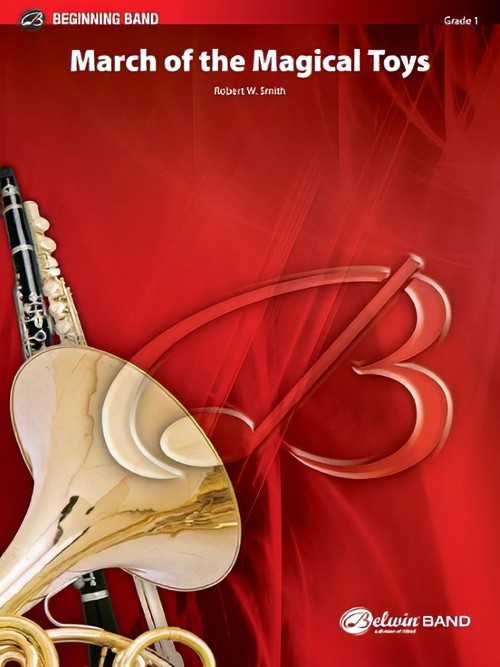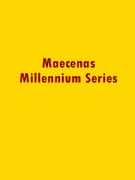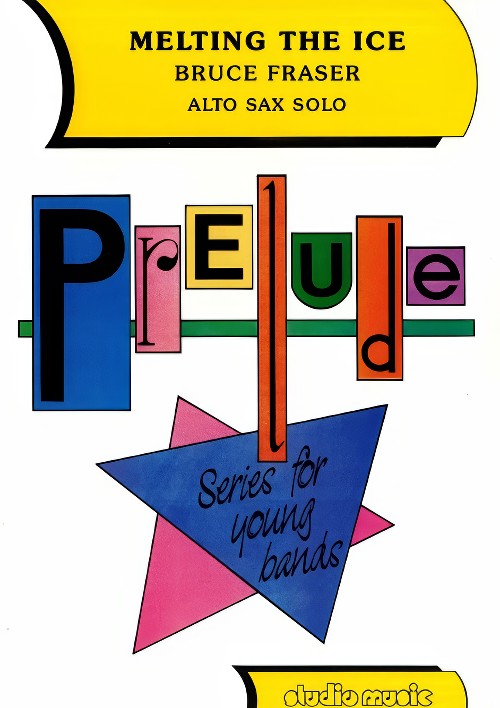Results
-
 £53.95
£53.95March of the Magical Toys (Concert Band - Score and Parts) - Smith, Robert W.
"'Twas the night before Christmas and all through the house, not a creature was stirring, not even a mouse. Santa had dropped through the chimney with care, hoping the children would be up the stairs. He placed all the toys round the tree with delight, and wiggled his nose at the stroke of midnight. The toys came alive and marched round and round, singing and dancing to holiday sounds." So begins Robert W. Smith's program notes. Need more be said? Here is that "Smith creativity" at its finest!Duration: 2:30
Estimated dispatch 7-14 working days
-
 £81.50
£81.50Euphonium Concerto (Euphonium Solo with Concert Band - Score and Parts) - Gorb, Adam
Commissioned by High School Bands from three continents, Gorb's thoughtful, cleverly scored piece is not the usual smash-and-grab showpiece, but a genuine dialogue between soloist and band where the player shows musicianship as well as display.Please note: This set of parts does not include music for the soloist. A piano reduction including solo part is available for purchase separately.Duration: 15:00
Estimated dispatch 7-14 working days
-
 £44.95
£44.95Melting the Ice (Alto Saxophone Solo with Concert Band - Score and Parts) - Fraser, Bruce
Melting the Ice is a lilting solo for the young alto saxophone player. While not technically taxing, it will require good breath control to achieve a nice flow in the solo part. Although it has a slow feel to it, be careful not to play it too slowly.Duration: 1.45
Estimated dispatch 7-14 working days
-
 £134.99
£134.99Hunting Tower (Concert Band - Score and Parts) - Respighi, Ottorino - Cesarini, Franco
Not much is known about the origin of Huntingtower, except for the fact that this ballad was composed in 1931 by the Italian composer Ottorino Respighi (1879-1936), commissioned by Edwin Franko Goldman and the American Bandmaster Association, and was premiered on 17 April 1932 at a concert in memory of John Philip Sousa in Washington D.C. It is not even certain whether Respighi arranged the work himself, or left this to someone else. Huntingtower is the name of a castle in Scotland, where Respighi spent some time. It is possible that this ballad contains his musical impressions of his stay there. The orchestration on this CD, made by Franco Cesarini in 1987, is an adaptation of the work to the demands of the contemporary concert band.Duration: 7:30
Estimated dispatch 7-14 working days
-
 £84.99
£84.99Scherzpolka (Concert Band - Score and Parts)
In the somewhat sarcastic Scherzpolka (Joke Polka), the composer does not intend to make fun of Alpine traditions and music but rather of the typical social attitude that does not always do justice to the valuable folk music and culture. Imagine a band that has to play in a beer tent for hours. During the performance the guests treat the musicians to one beer after another. Gradually, the players and the conductor lose control over their instruments and their interpretation of the music. Finally, the performance comes to an end: the Scherzpolka is actually the last piece. There are no limits to the creativity in both the visual and musical aspects during a performance of the Scherzpolka! 02:30
Estimated dispatch 7-14 working days
-
 £248.99
£248.99The White Tower (Concert Band - Score and Parts)
The year is 1798 and thieves, robbers, and bandits prowl the countryside, wreaking havoc wherever they go and more often than not escaping without so much as a scratch. This was, however, not the case with a supposedly well-planned assault on the German town of Daaden, during which 20 long sought-after crooks from Germany, France, and Holland where captured. Otto M. Schwarz' exciting musical montage lets people experience the planning, assault, and attempted retreat first hand! 20:05
Estimated dispatch 7-14 working days
-
 £174.10
£174.10Do Dat Thing - Harry Connick Jr.
Harry Connick Jr. is an American pianist, singer, composer and actor from New Orleans. He has released many albums and perform frequently with his own big band. "Do Dat Thing" is a real "feel-good" song composed in New Orleans style. The tempo must not be too fast. A kind of rough, heavy groove is preferred. When staccato is notated, the 8th notes have to be straight. The notations in the Drums-part is optional. From 35, the rhythm in the bass-line is meant as information for the musician. Be aware of the dynamics from the beginning (not too loud) to give it a "lift" at the end of the piece.
Estimated dispatch 7-14 working days
-
 £62.95
£62.95Tango for Two Left Feet - Terry White
The tango is a very graceful and precise style of Latin dance where the couple performing needs to be totally in sync with each other, as well as the music. Tango for Two Left Feet by Terry White depicts what happens when an inexperienced couple is not in sync, drops a beat or step, and are not in time with the music. In this case, the music drops the beat for them! This composition, in addition to providing rhythmic uniqueness, will allow young musicians the opportunity to learn and be familiar with the most common rhythms associated with the tango style. It also contains some unexpected harmonic twists at times, as well as contemporary harmonies that will provide additional interest to the composition. (2:40) This title is available in SmartMusic.
Estimated dispatch 7-14 working days
-
 £121.00
£121.00Andrea Chenier - Giordano
One of the most dramatic selections ever presented for band, "Andrea Chenier" has been a staple of mature and professional bands for over a century. This intense and exciting work includes some of the most passionate moments from the Italian opera into a breathtaking tour de force for mature bands. Prominently featuring bel-canto solos for euphonium and cornet/trumpet, the gorgeous melodies and dramatic musical climaxes will both thrill and excite performers and audiences alike. This striking fresh arrangement includes full score, and is carefully re-orchestrated to be more idiomatic to the wind band medium. Not for the faint-of-heart, and musically challenging, "Andrea Chenier" is ideal for experienced bands, and is not to be missed!
Estimated dispatch 7-14 working days
-
 £93.50
£93.50Los Peces En El Ro - Paul Clark
"Los Peces en el Ro" is a beloved traditional Spanish carol, widely popular in Mexico and other Latin American countries. This creative arrangement by Paul Clark for concert band offers a refreshing and unique selection for your holiday concert. With its origins not as widely recognized outside of Latin cultures, this piece provides an excellent opportunity to showcase your band at any concert or festival performance. From its bold and captivating introduction to its lively, Mariachi-inspired conclusion, "Los Peces en el Ro" will have your musicians and audiences alike tapping their feet and embracing the festive spirit.This work is not yet in print. Please check back later to view the conductor score and for purchasing information. In the meantime, please enjoy this recording performed by The Washington Winds, conducted by Edward S. Petersen.
Estimated dispatch 7-14 working days
